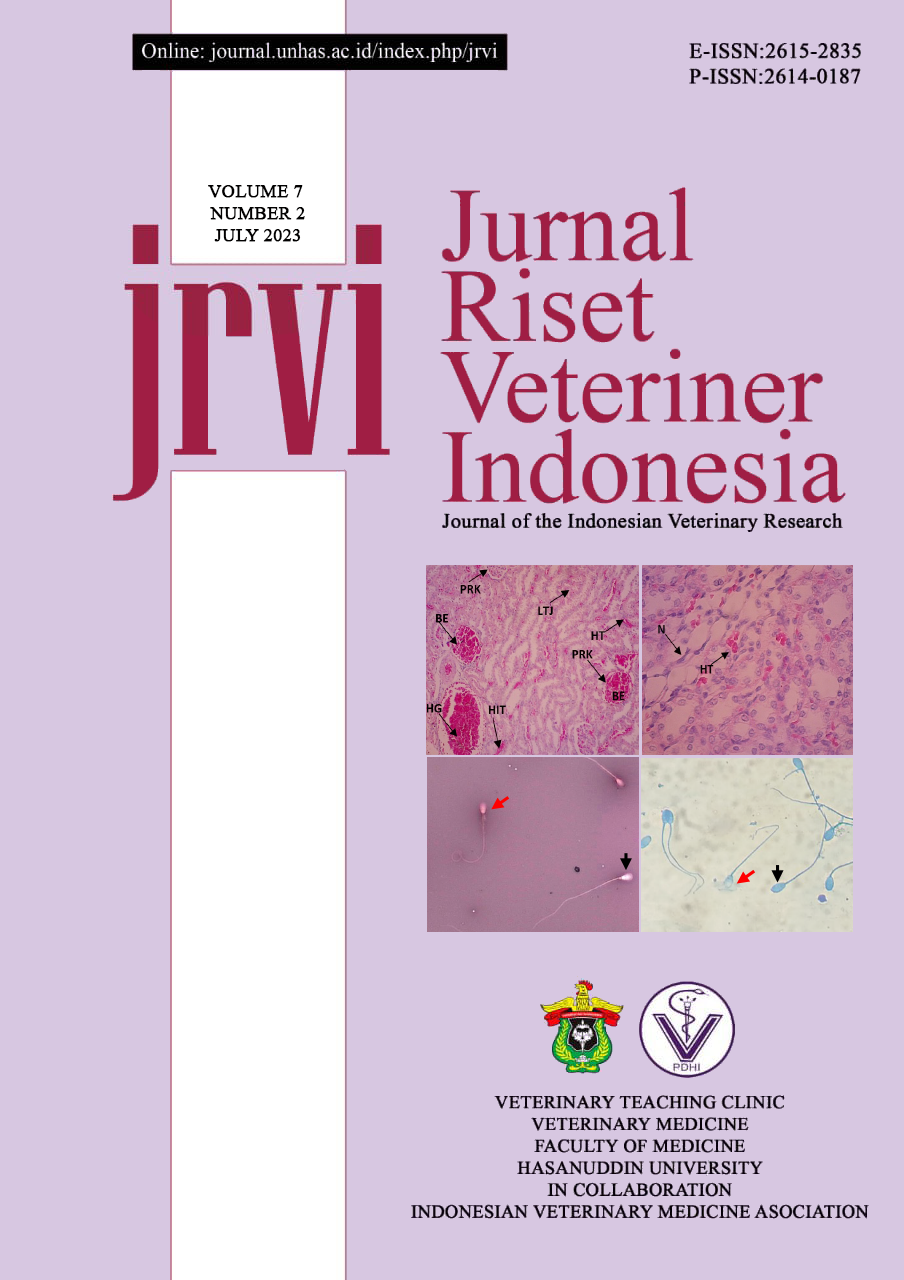Abstract
Background: Hemorrhagic shock is a condition that causes rapid and significant loss of intravascular blood volume, further leading to hemodynamic instability, decreased oxygen delivery, decreased tissue perfusion, cellular hypoxia, organ damage, and death. In conditions of hemorrhagic shock, measures are needed to prevent death in both humans and animals, one of which is by providing fluid therapy such as lactate ringer and gelatin. The purpose of the study: to see the effect of resuscitation of lactate and gelatin ringer fluid from the aspect of animal blood profile includes total erythrocytes, hematocrit (HCT) and hemoglobin (Hb). Research method: the sample in the study using male rabbits as many as 12 rabbits was divided into four groups: The negative control group (NC) was a healthy group without bleeding, the positive control group (PC) was the group given the bleeding treatment, the treatment group 1 (TG1) was the bleeding group and was treated with lactate ringer, and the treatment group 2 (TG2) was the bleeding group and treated a combination of lactate ringer and gelatin. Rabbits are bleeding with a presentation of 30% until they reach a state of hemorrhagic shock then shock is maintained for 45 minutes before resuscitation of fluid and for 60 minutes given fluid resuscitation. The results of the study: showed that the NC, PC, TG1, and TG2 groups showed a decrease in HCT values of 1.6%, 11.3%, 9% and 12%, respectively. Meanwhile, Hb values in rabbits decreased on average to 22 gr / dl, 13 gr / dl, 24.4 gr / dl and 20.9 gr / dl. Meanwhile, the total erythrocyte value showed a decrease in the average value reaching 2.48 x 106 / μL, 3.16 x 106 / μL, 4.2 x 106 / μL, and 3.9 x 106 / μL. The decline that occurs in the NC group is normal because the decrease that occurs is influenced by blood sampling, but in the PC, TG1, and TG2 groups are affected by the bleeding process. Based on the results of the study, it shows an increase in the indicators of Hb and Total Erythrocytes, this shows that giving fluid resuscitation to rabbits who experience hemorrhagic shock gives better results to the blood profile picture.
Background: Hemorrhagic shock is a condition that causes rapid and significant loss of intravascular blood volume, further leading to hemodynamic instability, decreased oxygen delivery, decreased tissue perfusion, cellular hypoxia, organ damage, and death. In conditions of hemorrhagic shock, measures are needed to prevent death in both humans and animals, one of which is by providing fluid therapy such as lactate ringer and gelatin. The purpose of the study: to see the effect of resuscitation of lactate and gelatin ringer fluid from the aspect of animal blood profile includes total erythrocytes, hematocrit (HCT) and hemoglobin (Hb). Research method: the sample in the study using male rabbits as many as 12 rabbits was divided into four groups: The negative control group (NC) was a healthy group without bleeding, the positive control group (PC) was the group given the bleeding treatment, the treatment group 1 (TG1) was the bleeding group and was treated with lactate ringer, and the treatment group 2 (TG2) was the bleeding group and treated a combination of lactate ringer and gelatin. Rabbits are bleeding with a presentation of 30% until they reach a state of hemorrhagic shock then shock is maintained for 45 minutes before resuscitation of fluid and for 60 minutes given fluid resuscitation. The results of the study: showed that the NC, PC, TG1, and TG2 groups showed a decrease in HCT values of 1.6%, 11.3%, 9% and 12%, respectively. Meanwhile, Hb values in rabbits decreased on average to 22 gr / dl, 13 gr / dl, 24.4 gr / dl and 20.9 gr / dl. Meanwhile, the total erythrocyte value showed a decrease in the average value reaching 2.48 x 106 / μL, 3.16 x 106 / μL, 4.2 x 106 / μL, and 3.9 x 106 / μL. The decline that occurs in the NC group is normal because the decrease that occurs is influenced by blood sampling, but in the PC, TG1, and TG2 groups are affected by the bleeding process. Based on the results of the study, it shows an increase in the indicators of Hb and Total Erythrocytes, this shows that giving fluid resuscitation to rabbits who experience hemorrhagic shock gives better results to the blood profile picture.

This work is licensed under a Creative Commons Attribution-NonCommercial 4.0 International License.

